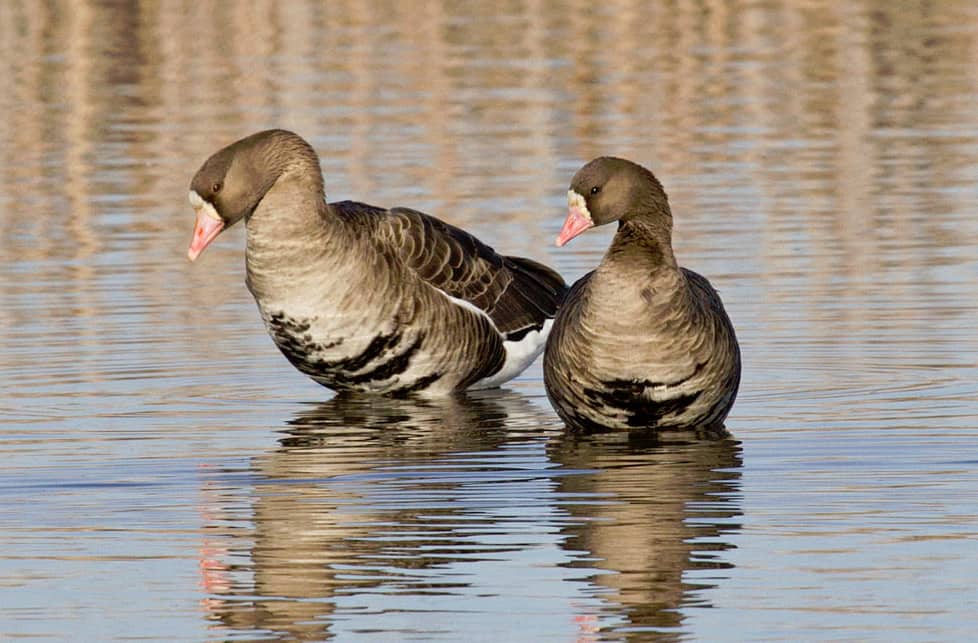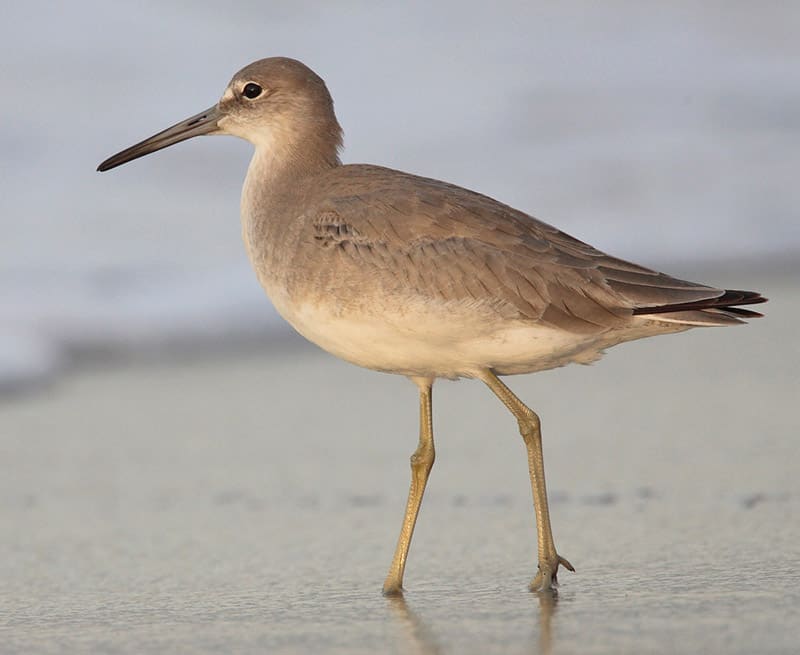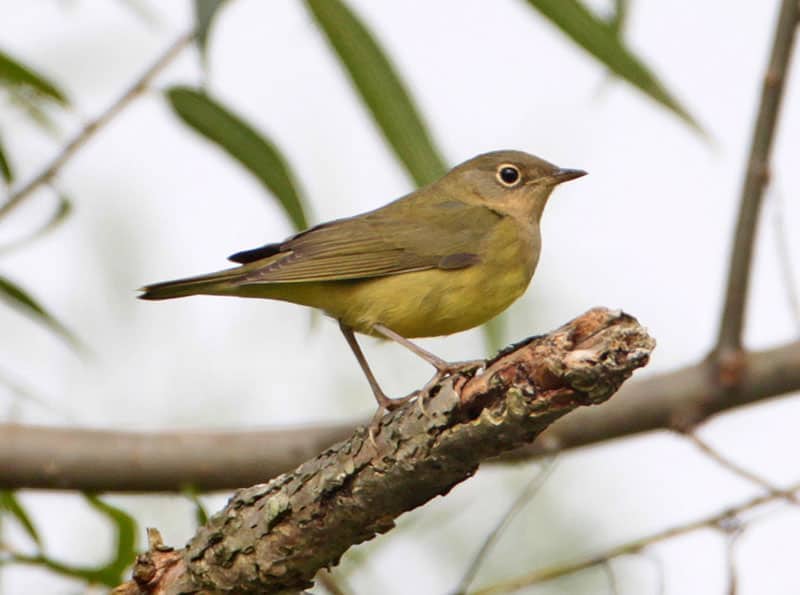Look For
The greater white-fronted goose is a medium-sized waterfowl with a plumage that is mostly grayish-brown. It has a variable level of barred black streaks across its belly. It has a white rump and undertail coverts, as well as a white patch on the front of its face. Its bill and legs are pinkish-orange.
Listen For
The greater white-fronted goose’s call is a combination of two or three squeaky, barking notes: kluh-ha or kluh-huh-luh.
Find It
During the breeding season, the greater white-fronted goose can be found in the far north of Canada from Alaska east to Nunavut as well as in parts of Greenland and Russia. It prefers coastal and marshy tundra environments with wide-open areas near reliable bodies of water.
During the winter, the greater white-fronted goose migrates down south to the United States including the Pacific Coast and the Gulf Coast of Texas and Louisiana and on down into Mexico. There, it prefers to live among crops, fields, lakes, and bays.
Feeding Behavior
The greater white-fronted goose feeds primarily on a variety of plant matter including stems, roots, berries, buds, seeds, and more. On occasion, it has also been observed eating small insects and mollusks. It forages by walking across fields and grazing. It also feeds out on the water, sometimes submerging its head or tipping its whole body upside down underwater in order to reach food.
Nesting Behavior
The greater white-fronted goose places its nest near a body of water, concealed among small shrubs and dense grasses. The female builds the nest by making a shallow hole in the ground and lining it with grasses and other fine plant fibers.
The female lays an average of 3 to 6 eggs that are off-white and stained light brown from the nest materials. The female incubates the eggs for 22 to 27 days before hatching. Both parents care for the young and guide them to food for at least a year before the young become independent enough to leave the nesting grounds.




